 |
 |
Our good friends at Accuquilt are celebrating with TheQuiltShow.com. They have a wonderful prize for one of the winners of the International Quilting Weekend Contest March 17-19, 2017. BUT TQS will open the contest to our viewers before that to make sure you can get your entry in.
Please keep following the newsletter for more IQW information.
Prize name: AccuQuilt GO!® Just Add Fabric-9" Starter Set
o Retail value: $524.96
o Included in set: GO! Fabric Cutter, GO! Qube™ 9” Mix & Match Block Die Set (includes 8 dies), GO! Value die, GO! Strip Cutter-2 ½” die, 2 cutting mats, die pick, GO! Sampler Pattern Book by Eleanor Burns, and GO! Quilting Ruler-12" x 12"
o http://www.accuquilt.com/
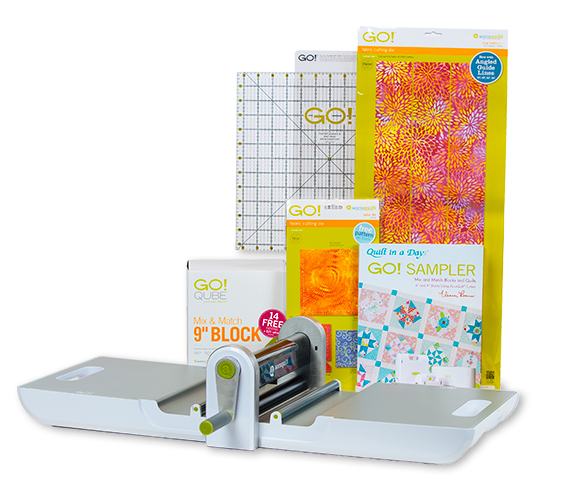
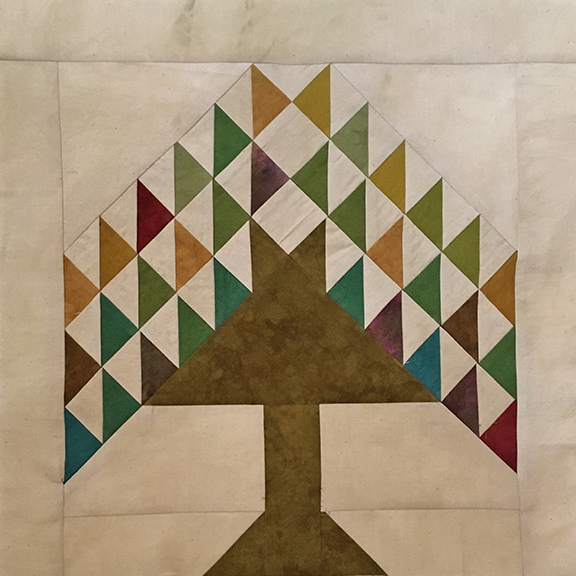
Exciting News! This year is the 150th birthday of Laura Ingalls Wilder and Ricky is tying the Laura Ingalls Wilder celebrations to the Legacy Quilt. Each block will feature quotes or stories relating to her life and Little House on the Prairie. (With gratitude to Laura Ingalls Wilder historian, Connie Ryle Newman for her assistance with this project.)
This month's block is the Tree of Life. Click here to download the pattern.
"A wee dark blob between [the Twin Lakes] was the Lone Tree. Pa said it was a big cottonwood, the only tree to be seen between the Big Sioux River and the Jim." - Laura Ingalls Wilder, By The Shores of Silver Lake Ch. 7 "West Begins"
Toward the end of the book, Pa plants little saplings from the Lone Tree near their homestead shanty, one for each of the four girls and Ma. Those cottonwoods are still growing today near De Smet, SD, on the Ingalls' homestead land. The photo shows "Pa's Trees" as they are today.
The trees are a favorite stop by those taking the Little House Trail.

More Exciting News! Due to the popularity and excitement that is building, Ricky has created an online meeting parlor in the Community Tab. Here you can interact and share photos of your blocks. Anyone can participate if you have a TQS membership -- both FREE Basic members or Star Members are welcome.
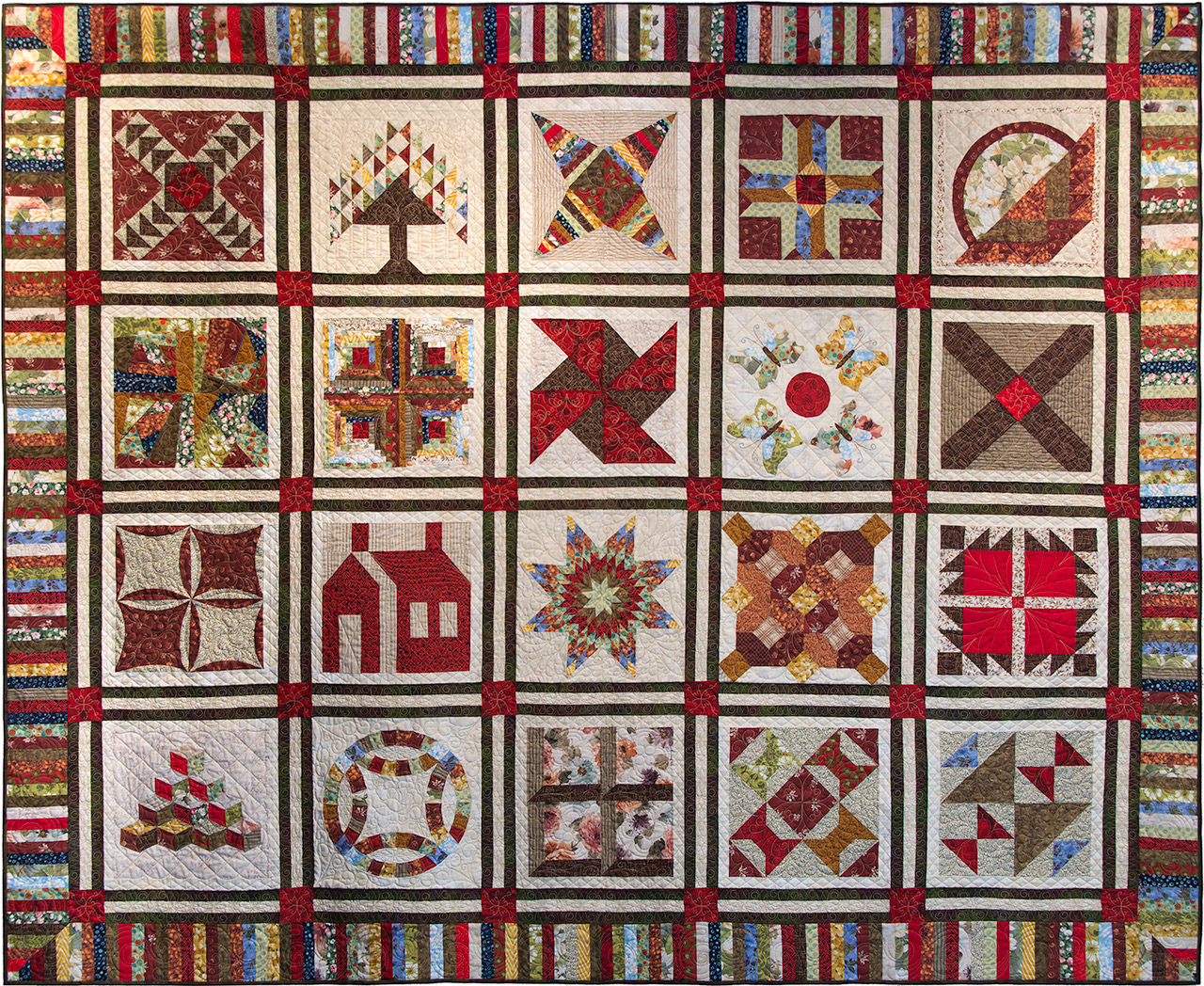
 Sometimes I just have to pinch myself...how blessed am I to live in a place that is home to so many wonderful quilt artists.
Sometimes I just have to pinch myself...how blessed am I to live in a place that is home to so many wonderful quilt artists.
 |
Laura Fogg is known for her free-form collage work. Here she is sharing some of her amazing quilts which range in subject from vegatables to ocean views.
Star Members can learn how Laura makes her quilts in Show 2005: Free-Form Collage and Embroidery.
 |
Sarah Bond talks about how her modern quilt links to a traditional past. This video is part of the Go Tell It at The Quilt Show program created by the Quilt Alliance. One quilt, one person, one video camera, three minutes = another quilt story saved!

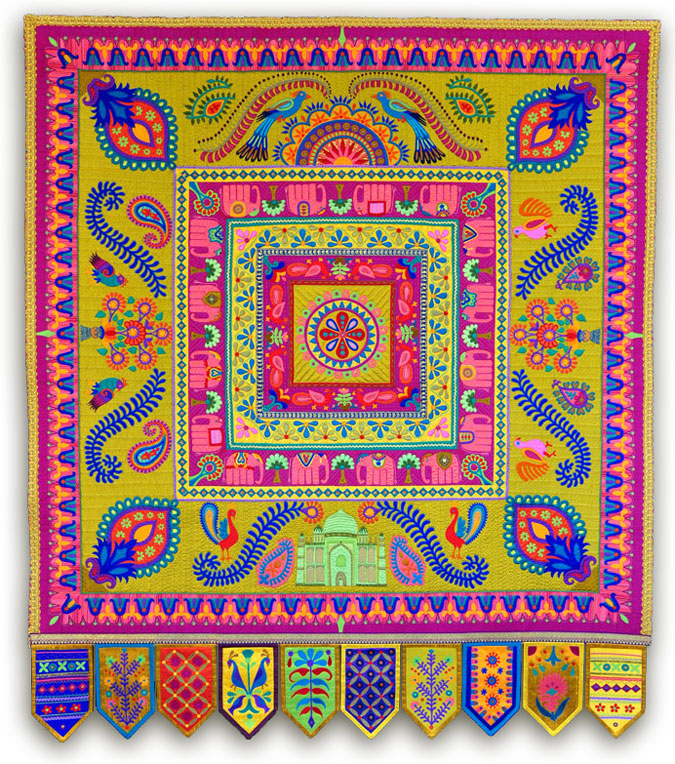

(Images, Jane Sassaman blog)
This week, Mary Elizabeth Kinch (Show 1502) shares how, with even small pieces of fabric, one can create maximum visual interest and movement in quilts.
Texture is the physical quality of a surface or a substance that we experience through our sense of touch. A strong element of design, texture adds depth and visual variety. It draws the viewer in, engaging them with the work and creating an emotional response. Everything has texture!
There are two types of texture in design: tactile and visual or implied.
Tactile Texture is the actual real physical quality of the surface that can be felt and appreciated, like the smoothness of satin or the roughness of sandpaper. Tactile texture is created with materials, processes and techniques, and how these are used together.

Visual or Implied Textureis a realistic illusion that is representative of, or imitates, texture. It is the perception of texture and is as powerful sensorily as tactile texture. Even though we cannot touch it, we experience a mental response as if we could feel what we see. Sargent expertly creates visual texture through the use of value, clearly depicting not only the luscious folds of the gown but the smoothness and weight of the silk satin used in the dress.
Creating visual textureand a sense of depth and contour, is achieved through a combination of different elements such as value, line and the principle of repetition.
This photo is a great example of perceived visual texture through the use of value, line and repetition. The rhythmic texture of the railings on the bridge is created through repetition and line. Value (and a bit of repetition) creates the soft texture of the leaves. And line and value do the work of creating spiky texture of the pine needles in the upper foreground.
(Ian Kinch, Bow Bridge, Central Park, 2016 https://www.instagram.com/i.w.kinch/)

Trompe L’oeil, a form of visual texture, is a design technique that is all about tricking our eye into seeing a 2D object as 3D. Here Mr. Lachaise and Mr. Gourdet have created a lovely example of trompe l’oeil. My eye is definitely tricked!
Quilts are naturally tactile through the use of various materials and techniques such as the quilting stitch, trapunto, decorative stitches or embellishments. Quilts made with many small pieces, are immensely tactile because of the sheer number of tiny morsels of fabric and the seams that join them.
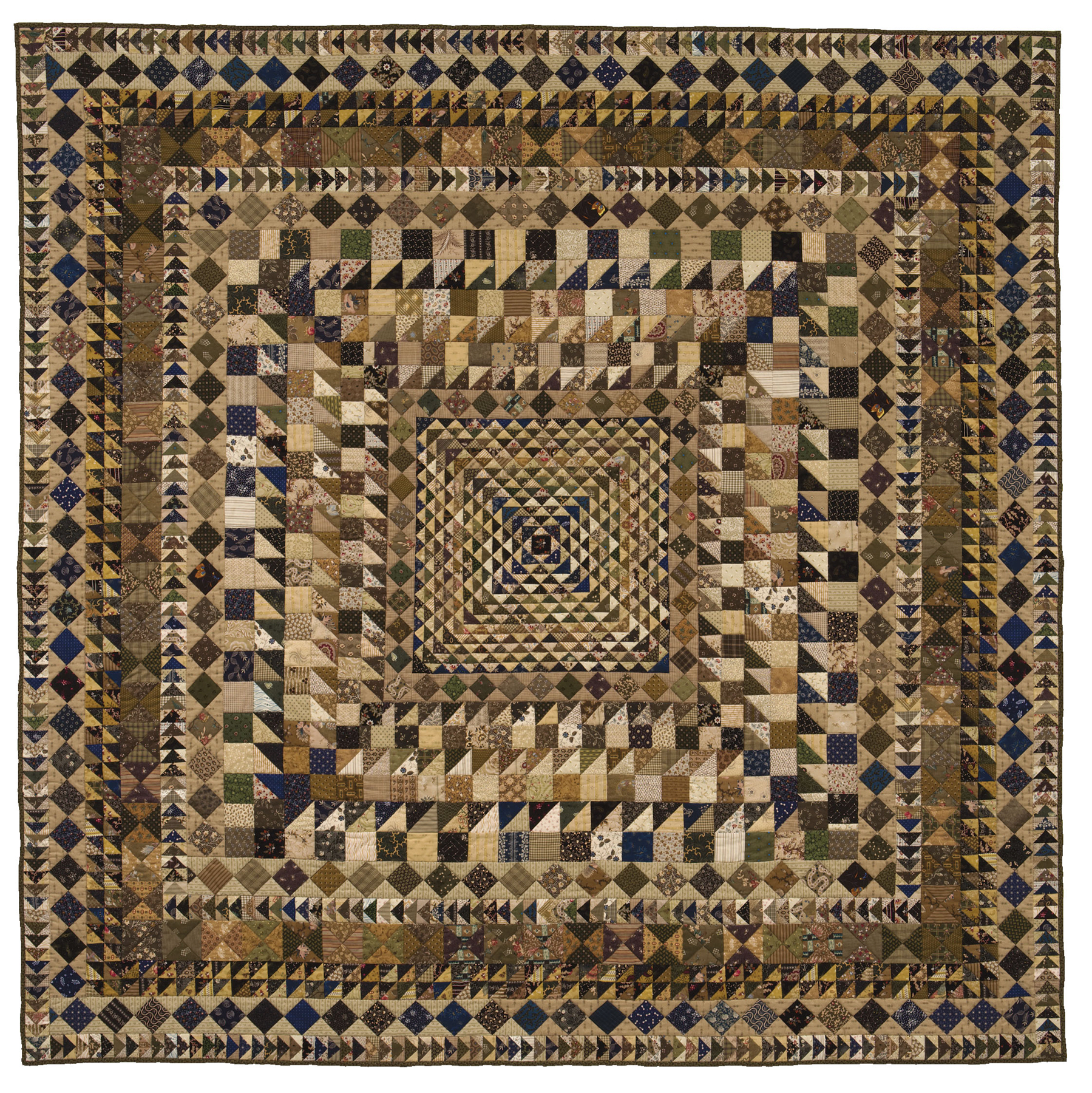
In quilts visual texture is created using the same concepts of value, line and repetition. Leap of Faith employs all three to generate visual texture.
Thoughtful value placement and careful positioning of color create the trompe l’oeil effect, in the centre of the quilt creating the impression of a 3D form. The contrast of light and dark, the dark points of the HSTs facing towards the centre, and the four darker inner rounds create dynamic visual texture and the illusion of depth. The next “frame” of dark squares on point on a medium background anchor the sense of movement and depth of the inner composition. Further out, the combination of values used in the round of “Broken Dishes” and two rows of HSTs contrast with the values used in the rest of the quilt, creating another “frame” and reinforcing the illusion of depth in the centre of the quilt.
Here is the quilt in black and white. Removing the element of colour sometimes the effect of value is more obvious. More texture is created with the lines in the block construction and by repeating the same block in each round. The outer rounds of “Flying Geese” purposefully having the geese “flying” in opposite directions adds some positive tension to the texture through movement.
This quilt’s small scale piecing created an opportunity for generous combinations of printed fabric designs to create visual texture. Printed fabrics offer great diversity when we think of them not just for their colour but also look at them in terms of scale of the print, style of the printed pattern and the density of the print.
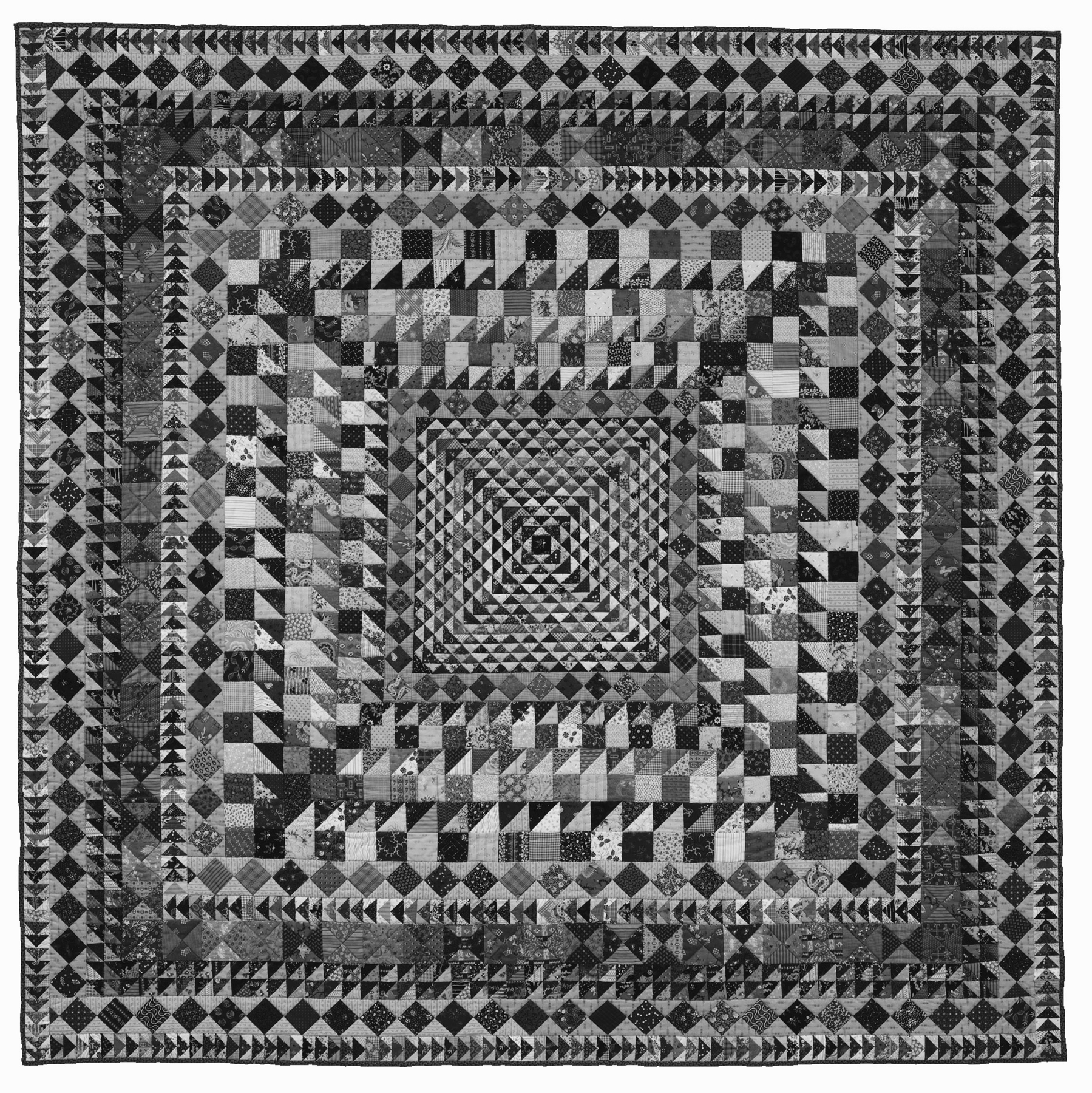
This quilt’s small scale piecing created an opportunity for generous combinations of printed fabric designs to create visual texture. Printed fabrics offer great diversity when we think of them not just for their colour but also look at them in terms of scale of the print, style of the printed pattern and the density of the print.

In this close-up you can see how a variety of prints helps create visual texture. Consider print characteristics like large and small scale florals, stripes (both straight lined and patterned), dots, plaids, bold graphic motifs and subtle low volume prints. The possibilities are endless!
Using line, value and repetition together you too can create exciting visual texture in your quilts.
Easy exercise 1:
Find how many ways texture has been used in this charming small TQS Classroom Project quilt by Lauren Vlcek (Show 1206).
Hint, not all of the fabrics are cotton.
Click here for more topics related to the Design to Quilt program.
The amazing QuiltCon 2017 Best in Show quilt came all the way from Tasmania. The large paper-pieced quilt is truly a "gem." Click on See the Quilts to see more winners.
Click here to watch a quick interview with Katherine Jones, the creator of the Best in Show quilt, bling. See her quilt below.
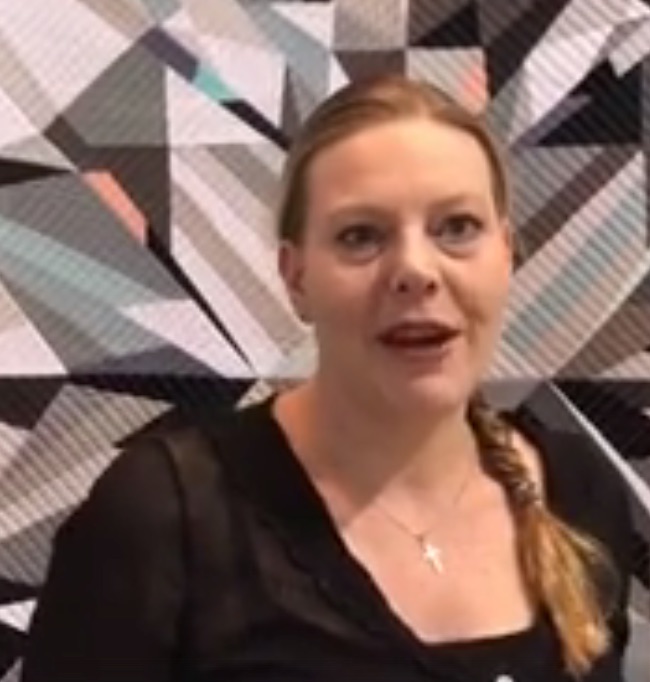
bling
Pieced and quilted by Katherine Jones
Chigwell, Tasmania, Australia
Tasmanian Modern Quilt Guild
@twocatsquilts
98 x 98 inches
Piecing
"Foundation paper pieced from solid fabrics the inspiration for this quilt was a princess cut diamond."
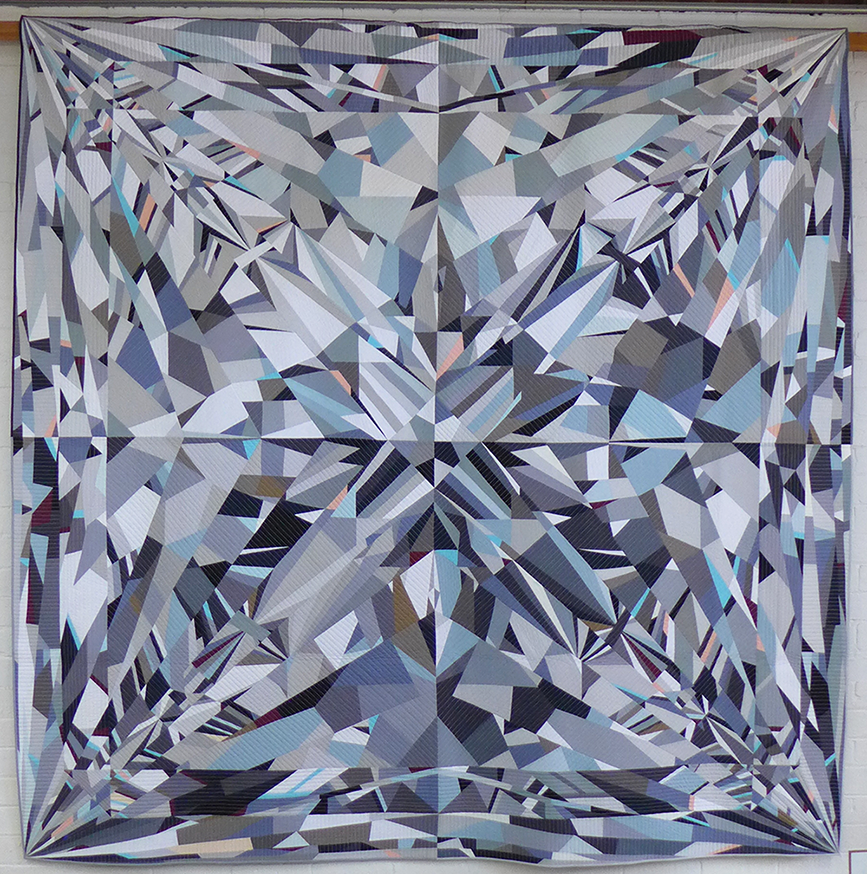
(QuiltCon 2017)
